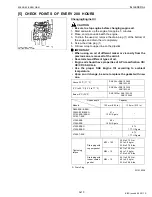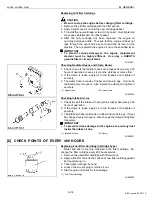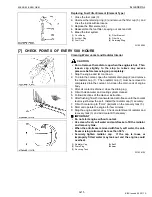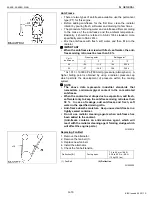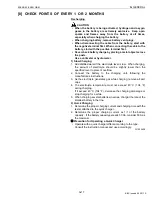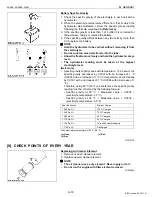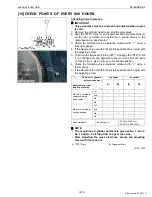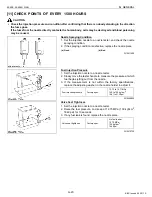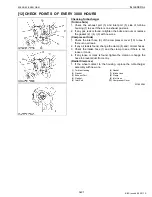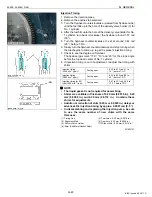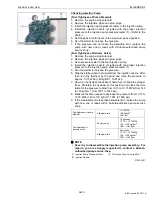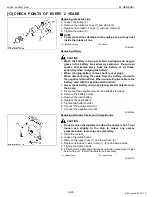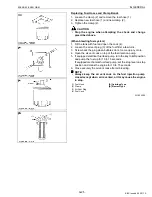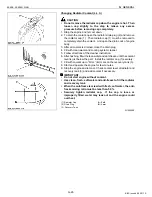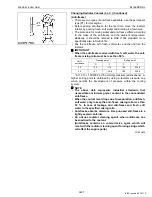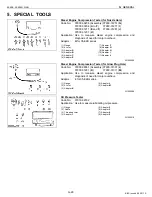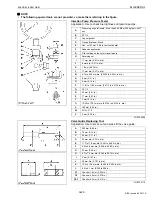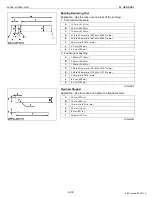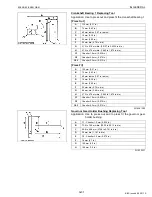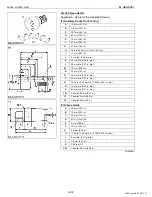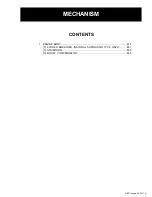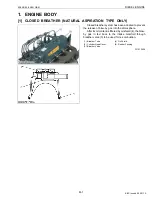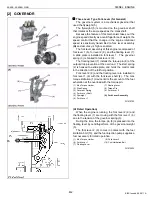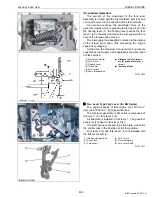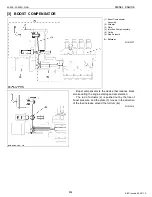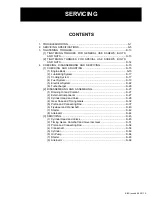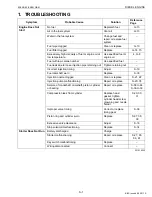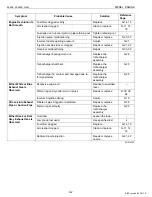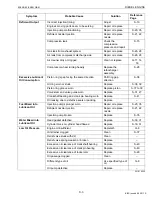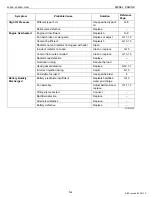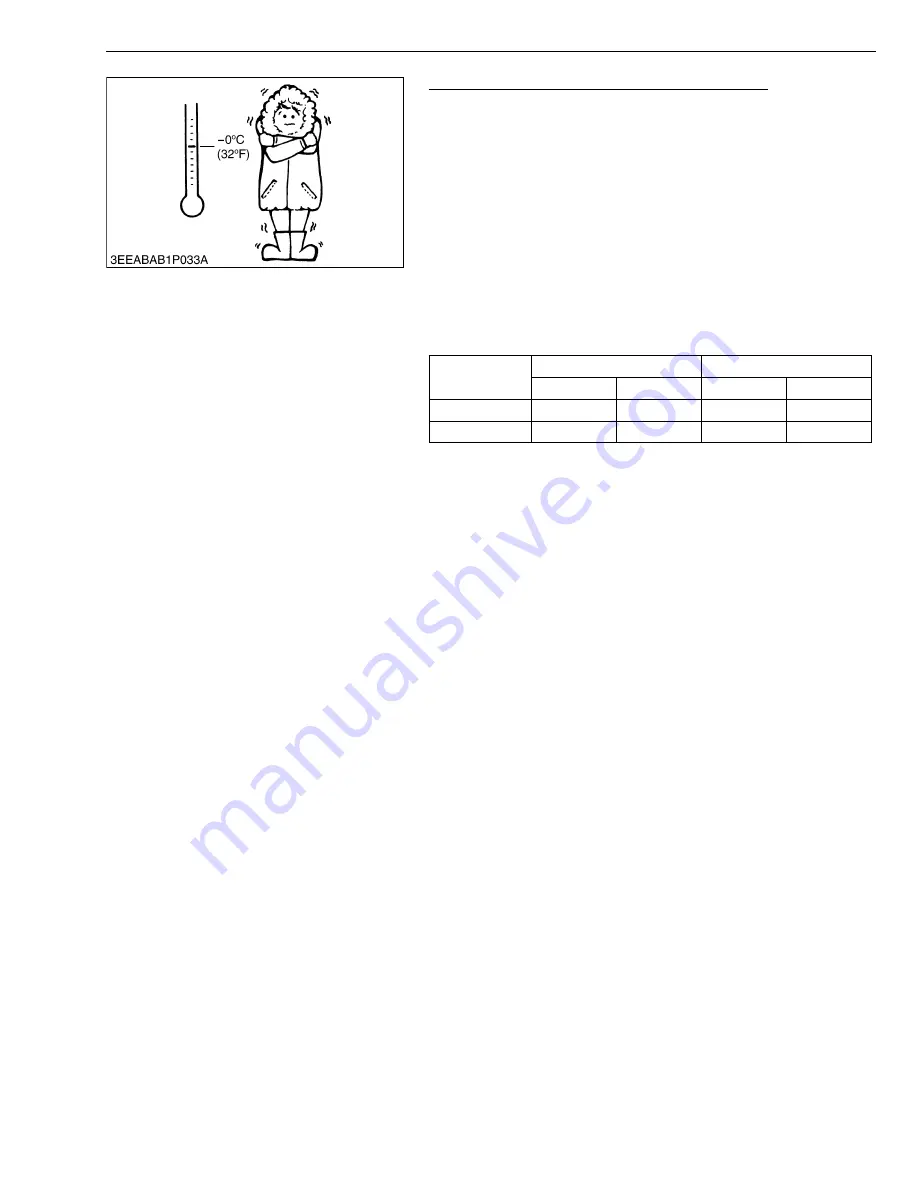
G-27
05-E2B, 05-E2BG, WSM
G
GENERAL
Changing Radiator Coolant (L.L.C.) (Continued)
(Anti-freeze)
• There are two types of anti-freeze available: use the permanent
type (PT) for this engine.
• Before adding anti-freeze for the first time, clean the radiator
interior by pouring fresh, soft water and draining it a few times.
• The procedure for mixing water and anti-freeze differs according
to the make of the anti-freeze and the ambient temperature.
Basically, it should be referred to SAE J1034 standard, more
specifically also to SAE J814c.
• Mix the anti-freeze with fresh, soft water, and then fill into the
radiator.
IMPORTANT
Q
• When the anti-freeze is mixed with fresh, soft water, the anti-
freeze mixing ratio must be less than 50 %.
* At 1.013 × 100000 Pa (760 mmHg) pressure (atmospheric). A
higher boiling point is obtained by using a radiator pressure cap
which permits the development of pressure within the cooling
system.
NOTE
Q
• The above data represents industrial standards that
necessitate a minimum glycol content in the concentrated
anti-freeze.
• When the coolant level drops due to evaporation, add fresh,
soft water only to keep the anti-freeze mixing ratio less than
50 %. In case of leakage, add anti-freeze and fresh, soft
water in the specified mixing ratio.
• Anti-freeze absorbs moisture. Keep unused anti-freeze in a
tightly sealed container.
• Do not use radiator cleaning agents when anti-freeze has
been added to the coolant.
(Anti-freeze contains an anti-corrosive agent, which will
react with the radiator cleaning agent forming sludge which
will affect the engine parts.)
W1024852
Vol %
anti-freeze
Freezing point
Boiling point*
°
C
°
F
°
C
°
F
40
–24
–11.2
106
222.8
50
–37
–34.6
108
226.4
KiSC issued 06, 2011 A

